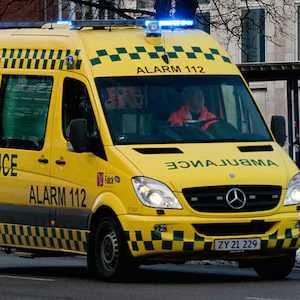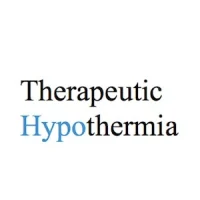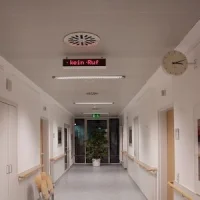An observational study from Denmark, based on data from the Danish Cardiac Arrest Registry, found an association between prehospital physician-delivered advanced cardiac life support as a supplement to emergency medical services and better 30-day survival. The article, by Annika Hamilton, Department of Anaesthesiology and Intensive Care, Hvidovre Hospital, University of Copenhagen, and colleagues, is published in November’s issue of Resuscitation.
Background
The prehospital emergency medical system in Denmark includes emergency ambulances staffed by emergency medical technicians, who can perform basic life support or paramedics who can give advanced life support. Ambulances can liaise with mobile critical care units (MCCUs), which may be staffed by physicians, nurse anaesthetists or paramedics, which gives more options for administering drugs, performing endotracheal intubation or advanced cardiac life support. When an OHCA call comes in, usually the ambulance and the MCCU are dispatched simultaneously and meet at the scene. Between 2009–2011, emergency calls concerning health issues were gradually taken over by health personnel on a national level, thus allowing for more frequent telephone-guided bystander CPR.See Also: Out-of-Hospital Cardiac Arrest: Can Outcomes Improve?
The Danish Cardiac Arrest Registry includes only patients where an initial resuscitation attempt was performed, either by bystanders or by EMS staff.
Results
21,165 persons with OHCA during 2005–2012 were included.Physician involvement
2005: 57.1%
2012: 71.6%
n=13,234 (62.5%)
30-day survival: 10.8%
ROSC: OR = 1.09
1-year survival: OR = 1.13
In this group patients were a little younger, fewer patients had OHCA at a private home, more received bystander CPR and had a witnessed cardiac arrest, had a shockable rhythm at first rhythm check and higher cormorbidities.
Without physician involvement
n=7931 (37.5%)
30-day survival: 8.1%
The researchers note that the positive association between physician involvement and 30-day survival was consistent across covariate strata, except in those patients with high Charlson Comorbidity Index and with initial non-shockable heart rhythm.
They also observe that survival improved with time in both exposure groups over the study period, most notably in arrests without physician involvement, leading to a decrease in both the absolute and relative difference between groups over time.
Although the researchers tested potential confounders in various models, they acknowledge that they cannot exclude residual confounding, for example if the decision to dispatch a physician was somehow related to the prognosis of the patient and therefore to the outcome. Their full data presents unadjusted and adjusted survival rates, using propensity score matching for the latter.
They conclude ”By using physicians in the prehospital setting in Denmark, we may be optimising one or more of the links in the chain-of-survival after OHCA. However, our study does not allow any conclusions to be drawn on which specific factors have contributed most to the increase in survival…our findings may not be directly applicable in other countries with different EMS systems.”
They recommend further research on the factors driving the trend in survival after OHCA in general, as well as the cost-effectiveness and cost-utility of including physicians in the prehospital setting.
In an accompanying editorial, Johannes von Vopelius-Feldt, Jonathan R. Benger, from the University of the West of England, UK write that these results suggest that physicians should be providing prehospital care for OHCA. They suggest a better question should be to ask how physicians might improve survival from OHCA, when compared to paramedics and divide OHCA care into that before and after a return of spontaneous circulation (ROSC). They aruge that it is in the post-ROSC phase of care that prehospital physicians can potentially provide the most benefit.
Image credit: Wikimedia Commons
References:
Hamilton A, Steinmetz J, Wissenberg M, Torp-Pedersen C, Lippert FK, Hove L, Lohse N (2016) Association
between prehospital physician involvement and survival after
out-of-hospital cardiac arrest: A Danish nationwide observational study. Resuscitation, 108: 95-101.
von Vopelius-Feldt J, Benger JR (2016) Should physicians attend out-of-hospital cardiac arrests? Resuscitation, 108: A6-A7.
von Vopelius-Feldt J, Benger JR (2016) Should physicians attend out-of-hospital cardiac arrests? Resuscitation, 108: A6-A7.
Latest Articles
OHCA, cardiac arrest, out of hospital, survival, physicians
An observational study from Denmark, based on data from the Danish Cardiac Arrest Registry, found an association between prehospital physician-delivered advanced cardiac life support as a supplement to emergency medical services and better 30-day survival










